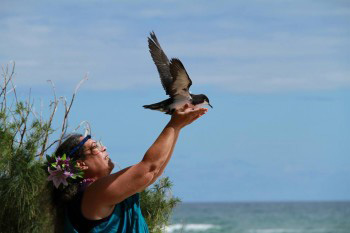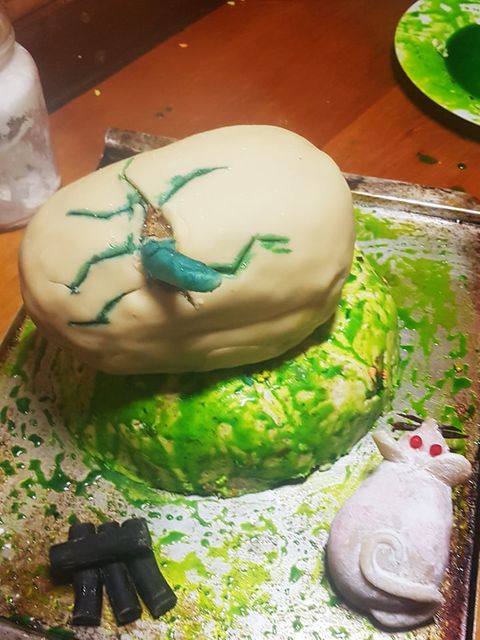
A downed Newell's Shearwater fledgling gets released, photograph by Elizabeth Ames
André Raine (Kaua‘i Endangered Seabird Recovery Project, University of Hawai‘i & State of Hawai‘i Department of Land and Natural Resources, Hanapepe, Hawaii, USA) and colleagues have published in the open-access journal Endangered Species Research on how well Newell’s Shearwater Puffinus newelli fledglings do after being downed by artificial lights on the Hawaiian island of Kauai and subsequently released.
The paper’s abstract follows:
“Light attraction impacts nocturnally active fledgling seabirds worldwide and is a particularly acute problem on Kaua‘i (the northern-most island in the main Hawaiian Island archipelago) for the Critically Endangered Newell’s shearwater Puffinus newelli. The Save Our Shearwaters (SOS) program was created in 1979 to address this issue and to date has recovered and released to sea more than 30500 fledglings. Although the value of the program for animal welfare is clear, as birds cannot simply be left to die, no evaluation exists to inform post-release survival. We used satellite transmitters to track 38 fledglings released by SOS and compared their survival rates (assessed by tag transmission duration) to those of 12 chicks that fledged naturally from the mountains of Kaua‘i. Wild fledglings transmitted longer than SOS birds, and SOS birds with longer rehabilitation periods transmitted for a shorter duration than birds released immediately or rehabilitated for only 1 d. Although transmitter durations from grounded fledglings were shorter (indicating impacts to survivorship), some SOS birds did survive and dispersed out to sea. All surviving birds (wild and SOS) traveled more than 2000 km to the southwest of Kaua‘i, where they concentrated mostly in the North Pacific Equatorial Countercurrent Province, revealing a large-scale annual post-breeding aggregation zone for fledgling Newell’s shearwaters. While there was reduced survival among birds undergoing rehabilitation, SOS remains an important contribution toward the conservation of Newell’s shearwater because a proportion of released birds do indeed survive. However, light attraction, the root cause of fallout, remains a serious unresolved issue on Kaua’i.”
Reference:
Raine, A.F., Anderson, T., Vynne, M., Driskill, S., Raine, H. & Adams, J. 2020. Post-release survival of fallout Newell’s shearwater fledglings from a rescue and rehabilitation program on Kaua‘i, Hawai‘i. Endangered Species Research 43: 39-50.
John Cooper, ACAP Information Officer, 15 September 2020

 English
English  Français
Français  Español
Español 




